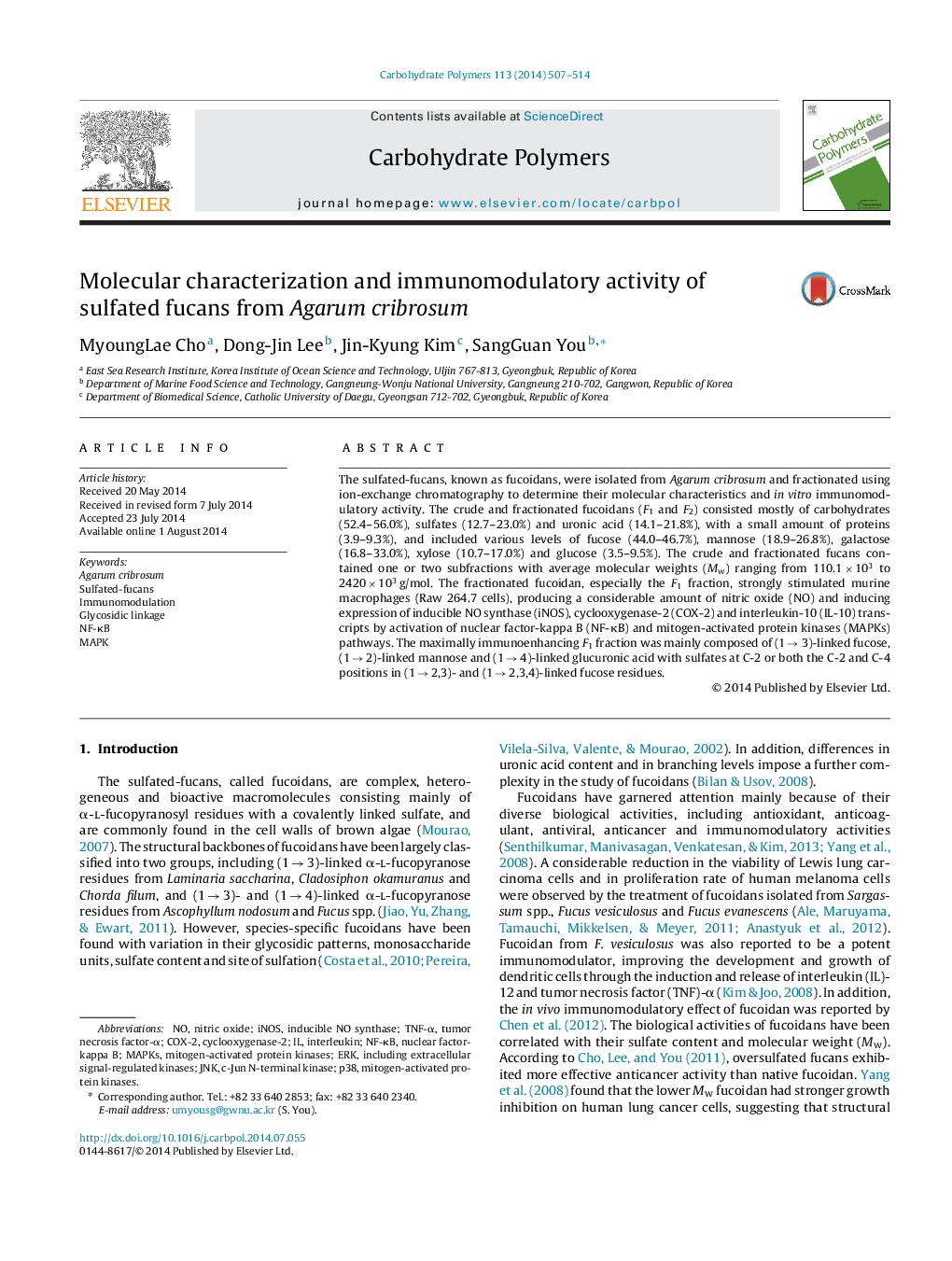| Article ID | Journal | Published Year | Pages | File Type |
|---|---|---|---|---|
| 7791145 | Carbohydrate Polymers | 2014 | 8 Pages |
Abstract
The sulfated-fucans, known as fucoidans, were isolated from Agarum cribrosum and fractionated using ion-exchange chromatography to determine their molecular characteristics and in vitro immunomodulatory activity. The crude and fractionated fucoidans (F1 and F2) consisted mostly of carbohydrates (52.4-56.0%), sulfates (12.7-23.0%) and uronic acid (14.1-21.8%), with a small amount of proteins (3.9-9.3%), and included various levels of fucose (44.0-46.7%), mannose (18.9-26.8%), galactose (16.8-33.0%), xylose (10.7-17.0%) and glucose (3.5-9.5%). The crude and fractionated fucans contained one or two subfractions with average molecular weights (Mw) ranging from 110.1 Ã 103 to 2420 Ã 103 g/mol. The fractionated fucoidan, especially the F1 fraction, strongly stimulated murine macrophages (Raw 264.7 cells), producing a considerable amount of nitric oxide (NO) and inducing expression of inducible NO synthase (iNOS), cyclooxygenase-2 (COX-2) and interleukin-10 (IL-10) transcripts by activation of nuclear factor-kappa B (NF-κB) and mitogen-activated protein kinases (MAPKs) pathways. The maximally immunoenhancing F1 fraction was mainly composed of (1 â 3)-linked fucose, (1 â 2)-linked mannose and (1 â 4)-linked glucuronic acid with sulfates at C-2 or both the C-2 and C-4 positions in (1 â 2,3)- and (1 â 2,3,4)-linked fucose residues.
Keywords
Related Topics
Physical Sciences and Engineering
Chemistry
Organic Chemistry
Authors
MyoungLae Cho, Dong-Jin Lee, Jin-Kyung Kim, SangGuan You,
